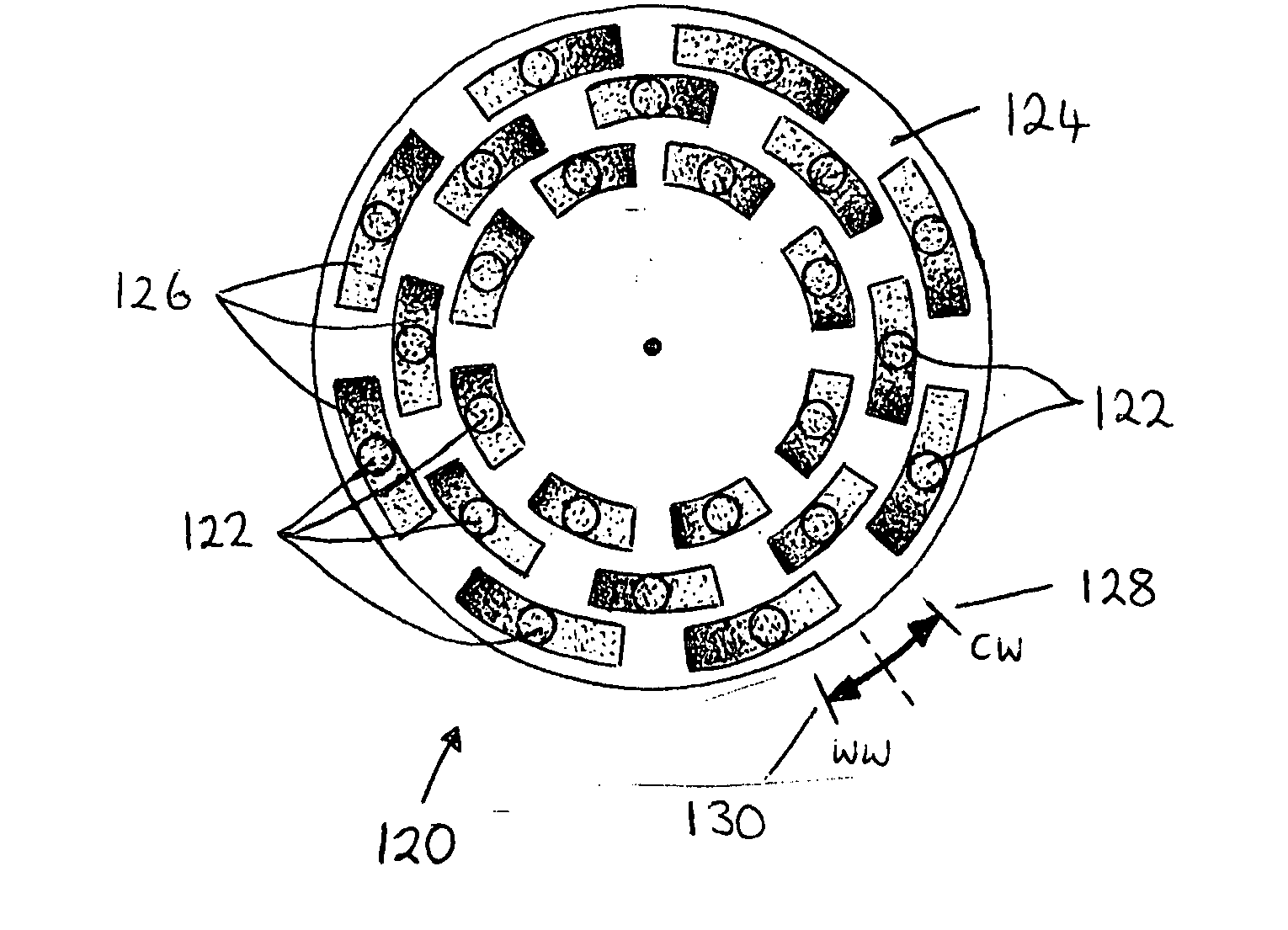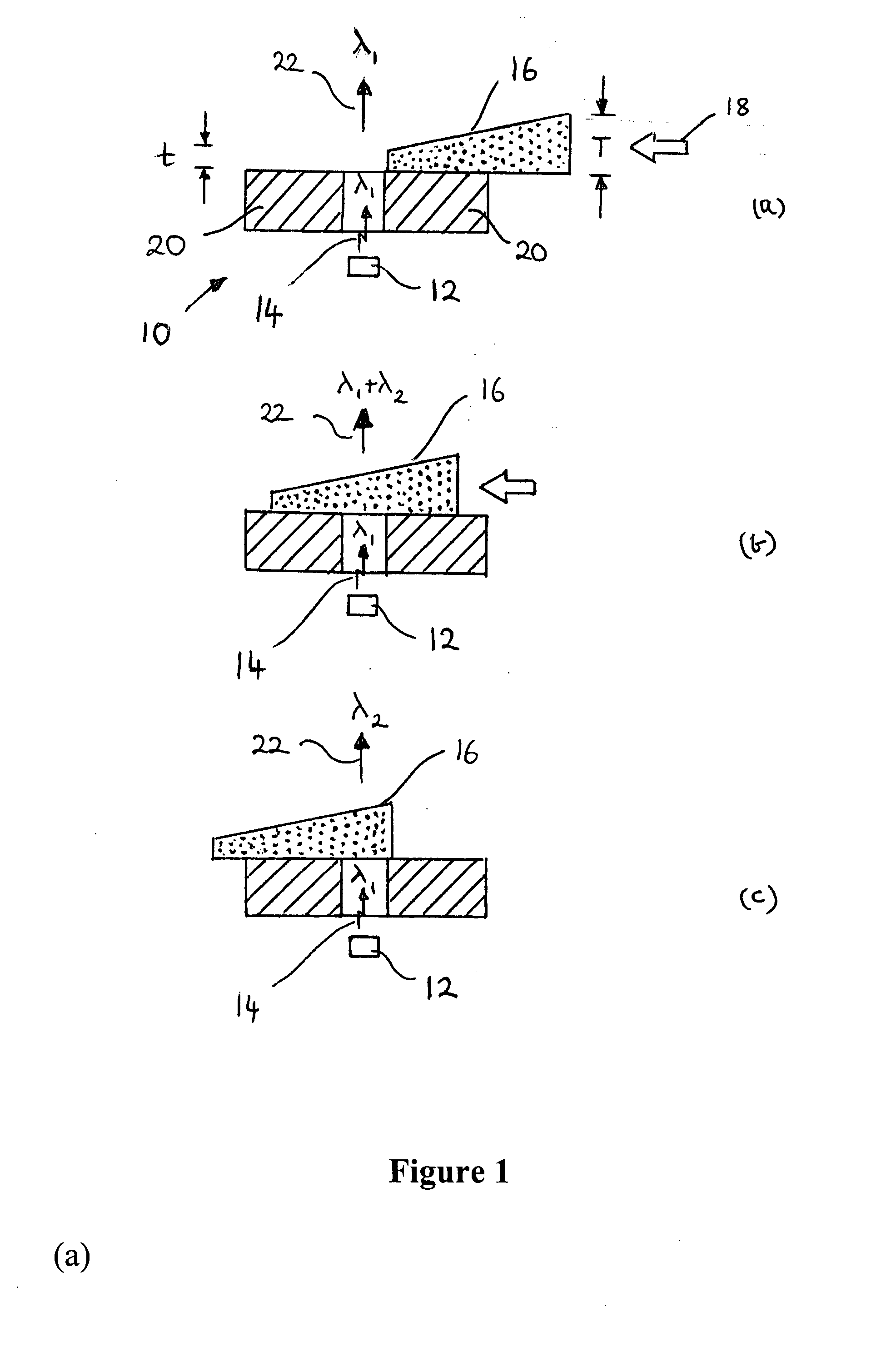Color tunable light emitting device
a light-emitting device and color temperature technology, applied in the direction of point-like light sources, spectral modifiers, lighting and heating apparatuses, etc., can solve the problems of complex driver circuitry required to operate these sources, the cct can change over the operating lifetime of the device, and the human eye is extremely sensitive to subtle changes, etc., to achieve the effect of reducing or even eliminating the need for binning and inexpensive color tunabl
- Summary
- Abstract
- Description
- Claims
- Application Information
AI Technical Summary
Benefits of technology
Problems solved by technology
Method used
Image
Examples
Embodiment Construction
[0034]Embodiments of the invention are based on a wavelength converting component that has a wavelength converting property (characteristic) that varies spatially and which is used to convert light from an excitation source, typically a light emitting diode (LED), which is of one wavelength range (color) into light of a different wavelength range (color). The color of light generated by the device, which comprises the combined light of the first and second wavelength ranges, can be controlled (tuned) by moving the component relative to the excitation source to change the total proportion of light of the second wavelength range.
[0035]Referring to FIGS. 1(a) to (c) there are shown schematic representations of the principle of operation of a color tunable light emitting device 10 in accordance with the invention. The device 10 comprises an excitation source 12 operable to generate excitation radiation 14 (light) of wavelength range λ1 and a moveable wavelength converting component 16. ...
PUM
 Login to View More
Login to View More Abstract
Description
Claims
Application Information
 Login to View More
Login to View More - R&D
- Intellectual Property
- Life Sciences
- Materials
- Tech Scout
- Unparalleled Data Quality
- Higher Quality Content
- 60% Fewer Hallucinations
Browse by: Latest US Patents, China's latest patents, Technical Efficacy Thesaurus, Application Domain, Technology Topic, Popular Technical Reports.
© 2025 PatSnap. All rights reserved.Legal|Privacy policy|Modern Slavery Act Transparency Statement|Sitemap|About US| Contact US: help@patsnap.com



